Cooking on a griddle can give you that perfect crispy texture and rich flavor, but choosing the right oil is key to making the most out of your griddle. Some oils stand up better to high heat than others, and some bring extra flavor to the table. Whether you’re cooking breakfast favorites or savory dinners, picking the best oil can elevate your griddle meals. Below, we’ll walk you through the top oils for griddle cooking and how they can help you cook like a pro.

1. Canola Oil
Canola oil is derived from the seeds of the canola plant and is widely used for high-heat cooking due to its relatively high smoke point of around 400°F (204°C). It has a neutral flavor, which makes it versatile for various types of cooking, including frying, sautéing, and griddling. The oil is low in saturated fats and contains a balance of omega-3 and omega-6 fatty acids. These characteristics make it a popular choice for health-conscious individuals. Canola oil is also affordable and has a long shelf life, contributing to its popularity in many kitchens worldwide.
Key Highlights:
- Smoke Point: Approximately 400°F (204°C).
- Flavor: Neutral, does not interfere with the taste of dishes.
- Fat Composition: Low in saturated fats, containing beneficial omega-3 and omega-6 fatty acids.
- Health Aspects: Considered heart-healthy due to its fat profile.
- Cost: Generally affordable and widely available.
Best Used For:
- Cooking pancakes and other breakfast items on the griddle.
- Stir-frying vegetables and meats.
- Griddling sandwiches and quesadillas.
- Searing meats due to its high heat tolerance.
- General-purpose cooking requiring a neutral flavor.
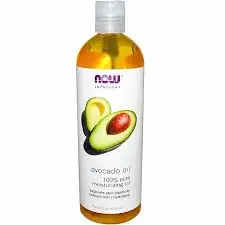
2. Avocado Oil
Avocado oil is pressed from the flesh of avocados and has one of the highest smoke points of any cooking oil, around 520°F (271°C) for refined varieties. This high smoke point makes it suitable for cooking at higher temperatures, including searing and stir-frying. Rich in monounsaturated fats, avocado oil is considered beneficial for heart health. It also contains vitamin E, an antioxidant that supports skin and eye health. The oil has a mild, buttery flavor that can enhance the taste of many dishes without overpowering them, making it versatile for both savory and sweet recipes.
Key Highlights:
- Smoke Point: Up to 520°F (271°C) for refined oil.
- Flavor: Buttery and rich, adding depth to dishes.
- Fat Composition: High in monounsaturated fats, supporting heart health.
- Nutrient Content: Contains vitamin E, an antioxidant beneficial for health.
- Versatility: Suitable for high-heat cooking methods like searing and stir-frying.
Best Used For:
- Searing meats such as steak and chicken.
- Stir-frying vegetables and tofu.
- Griddling sandwiches and paninis.
- Cooking eggs to achieve a crispy edge.
- Roasting vegetables for a rich flavor.

3. Sunflower Oil
Sunflower oil is extracted from sunflower seeds and is known for its high smoke point, around 440°F (227°C), which makes it a good choice for high-heat cooking methods like frying and griddling. This oil has a light, neutral flavor that does not interfere with the taste of food, making it versatile for various dishes. Sunflower oil is also high in vitamin E, which is known for its antioxidant properties. The oil contains primarily polyunsaturated fats, which are often considered heart-healthy. Due to its stability, sunflower oil also has a relatively long shelf life compared to other oils.
Key Highlights:
- Smoke Point: Approximately 440°F (227°C).
- Flavor: Mild and neutral, not affecting the flavor profile of foods.
- Fat Composition: High in polyunsaturated fats, beneficial for heart health.
- Nutrient Content: Contains significant amounts of vitamin E, supporting skin and eye health.
- Stability: Resistant to oxidation, contributing to a longer shelf life.
Best Used For:
- Cooking grains like quinoa or rice on the griddle.
- Making quesadillas and grilled sandwiches.
- Stir-frying vegetables and meats.
- Griddling pancakes and other breakfast items.
- Deep-frying due to its high heat tolerance.
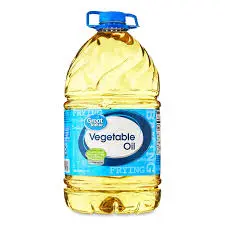
4. Vegetable Oil
Vegetable oil is a generic term that refers to a variety of plant-based oils, often a blend of soybean, corn, and other oils. It is known for its relatively high smoke point, ranging from 400°F to 450°F (204°C to 232°C), making it suitable for high-heat cooking such as frying, sautéing, and griddling. The oil has a neutral taste, allowing the natural flavors of the food to shine through. Vegetable oil is also widely available and relatively inexpensive, which contributes to its widespread use in both home and commercial kitchens. However, it is higher in omega-6 fatty acids, which should be consumed in balance with omega-3 fats.
Key Highlights:
- Smoke Point: Between 400°F to 450°F (204°C to 232°C), depending on the blend.
- Flavor: Neutral, ensuring the natural flavors of foods are preserved.
- Cost: Generally affordable and accessible in most markets.
- Versatility: Suitable for various cooking methods, including frying and baking.
- Stability: Blends are often formulated to resist oxidation, extending shelf life.
Best Used For:
- Cooking a variety of dishes on the griddle, from meats to vegetables.
- Deep-frying items like french fries and chicken tenders.
- Baking applications requiring a neutral oil.
- Sautéing vegetables and aromatics.
- Making dressings and marinades.
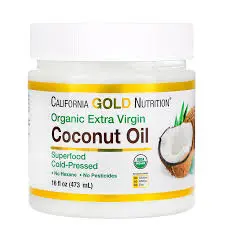
5. Coconut Oil
Coconut oil is made from the flesh of coconuts and is known for its distinct, slightly sweet flavor and solid consistency at room temperature. It has a moderate smoke point of around 350°F (177°C) for unrefined or 400–450°F (204–232°C) for refined coconut oil, which makes it suitable for medium-heat cooking like griddling and sautéing. Coconut oil is high in saturated fats, particularly medium-chain triglycerides (MCTs), which are believed to have some health benefits. While coconut oil has been praised for its potential weight management benefits, its high saturated fat content means it should be used in moderation as part of a balanced diet.
Key Highlights:
- Smoke Point: Approximately 400°F (204°C), making it suitable for medium-heat cooking.
- Flavor: Distinct, slightly sweet flavor that can enhance certain dishes.
- Fat Composition: High in saturated fats, particularly medium-chain triglycerides (MCTs), which are easily metabolized by the body.
- Health Considerations: May have potential health benefits when used in moderation, including supporting weight management and boosting metabolism.
- Shelf Life: Due to its high saturated fat content, coconut oil has a longer shelf life compared to some other oils.
Best Used For:
- Griddling pancakes and other breakfast foods to add a subtle coconut flavor.
- Sautéing vegetables and stir-fries, where the oil’s unique flavor complements the dish.
- Baking: Often used in vegan and dairy-free baking for moisture and richness.
- Cooking meat or fish: Helps achieve a crispy crust while enhancing the flavor of grilled proteins.
- Making sauces and dressings: Ideal for creamy dressings, especially in tropical or Asian-inspired dishes.
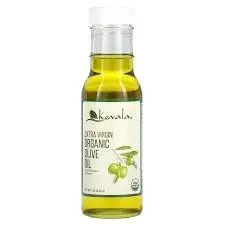
6. Olive Oil
Olive oil is made by pressing fresh olives and is a staple in Mediterranean cuisine. It comes in various types, with extra virgin olive oil being the least processed and offering the most flavor. Extra virgin olive oil has a smoke point of around 375°F (190°C), best for low to medium heat, while refined olive oil reaches up to 465°F (240°C) for griddle cooking. It is rich in monounsaturated fats, which are considered beneficial for heart health. The oil has a distinctive, slightly peppery taste, adding a unique flavor to dishes. Extra virgin olive oil is often preferred for finishing dishes, while regular olive oil is better for cooking.
Key Highlights:
- Smoke Point: Around 375°F (190°C) for extra virgin olive oil.
- Flavor: Rich and fruity, with a slightly peppery taste.
- Fat Composition: High in monounsaturated fats, beneficial for heart health.
- Antioxidants: Contains polyphenols, which act as antioxidants.
- Versatility: Works well in both cooking and as a finishing oil for salads and dishes.
Best Used For:
- Griddling vegetables and fish for a Mediterranean flavor.
- Sautéing garlic and onions to enhance the base of many dishes.
- Griddling bread for making garlic bread or grilled sandwiches.
- Drizzling over cooked dishes for extra flavor.
- Making dressings and dips like vinaigrettes or hummus.

7. Peanut Oil
Peanut oil is derived from pressed peanuts and has a high smoke point of around 450°F (232°C), making it perfect for high-heat cooking methods, including griddling. It has a mild, slightly nutty flavor that can enhance dishes without overpowering them. Rich in monounsaturated fats, peanut oil is often chosen for frying and stir-frying. It’s commonly used in Asian cuisine, particularly for deep-frying. It’s important to note that people with nut allergies should avoid peanut oil.
Key Highlights:
- Smoke Point: Around 450°F (232°C).
- Flavor: Mild with a slight nutty taste.
- Fat Composition: High in monounsaturated fats, considered heart-healthy.
- Allergy Considerations: Should be avoided by individuals with nut allergies.
- Stability: Resistant to oxidation, which helps prolong its shelf life.
Best Used For:
- Stir-frying vegetables and meats in high-heat cooking.
- Griddling chicken and pork to achieve a crispy exterior.
- Frying French fries and other crispy snacks.
- Making homemade fried chicken due to its high heat tolerance.
- Cooking Asian-style dishes like stir-fry or tempura.

8. Ghee
Ghee is a type of clarified butter that is popular in Indian cuisine. It has a high smoke point of around 485°F (252°C) and a rich, nutty flavor. Ghee is made by simmering butter to remove the milk solids and water, leaving behind pure butterfat. It is rich in butyrate, a short-chain fatty acid, which has potential health benefits. Ghee is also lactose-free, making it a good alternative for individuals with lactose intolerance. Its distinct flavor enhances the taste of many dishes.
Key Highlights:
- Smoke Point: Around 485°F (252°C).
- Flavor: Nutty and rich, with a buttery taste.
- Lactose-Free: Ideal for those with lactose intolerance.
- Fat Composition: High in saturated fats, particularly butyrate.
- Shelf Life: Has a long shelf life due to the removal of milk solids.
Best Used For:
- Griddling meats like steak or chicken to enhance flavor.
- Sautéing vegetables for a rich, buttery taste.
- Cooking traditional Indian dishes like curries or dals.
- Frying and deep-frying due to its high smoke point.
- Drizzling over rice or bread for added flavor.
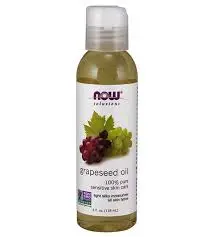
9. Grapeseed Oil
Grapeseed oil is extracted from the seeds of grapes, typically as a by-product of winemaking. It has a high smoke point of around 420°F (216°C), making it suitable for high-heat cooking, including griddling. The oil has a light, neutral flavor and is high in polyunsaturated fats. It is also a good source of vitamin E, an antioxidant that supports skin health. Grapeseed oil is often used in frying, sautéing, and salad dressings.
Key Highlights:
- Smoke Point: Around 420°F (216°C).
- Flavor: Light and neutral, allowing other flavors to shine.
- Fat Composition: High in polyunsaturated fats, including omega-6 fatty acids.
- Nutrient Content: Rich in vitamin E, promoting skin health.
- Versatility: Works well for high-heat cooking and as a salad dressing base.
Best Used For:
- Griddling meats like steak and burgers.
- Frying fish and seafood for a light, crispy texture.
- Making dressings and vinaigrettes for salads.
- Sautéing vegetables without altering their flavor.
- Roasting vegetables for a healthy cooking option.
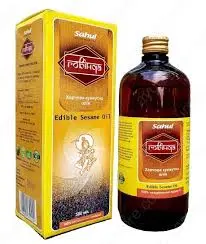
10. Sesame Oil
Sesame oil is derived from sesame seeds and is a staple in many Asian cuisines. There are two types: light sesame oil (made from raw seeds) and toasted sesame oil (made from roasted seeds). The light variety has a high smoke point of around 410°F (210°C), while the toasted variety has a much lower smoke point and is used primarily as a flavoring oil. Sesame oil is rich in polyunsaturated fats, including omega-6 fatty acids, and has a distinctive, nutty flavor.
Key Highlights:
- Smoke Point: Around 410°F (210°C) for light sesame oil.
- Flavor: Nutty and rich, especially with toasted varieties.
- Fat Composition: High in polyunsaturated fats.
- Antioxidants: Contains sesamin and sesamol, compounds with antioxidant properties.
- Health Benefits: May help reduce inflammation and support heart health.
Best Used For:
- Griddling vegetables and meats for added flavor.
- Making stir-fried dishes like Asian-style fried rice.
- Drizzling over salads for extra flavor.
- Cooking tofu or tempeh for a savory coating.
- Seasoning soups and broths for a nutty finish.
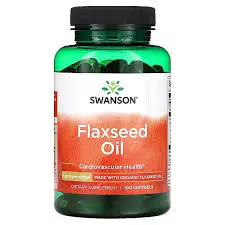
11. Flaxseed Oil
Flaxseed oil is derived from the seeds of the flax plant and is well-known for its high content of omega-3 fatty acids, particularly alpha-linolenic acid (ALA). However, it has a low smoke point of around 225°F (107°C), so it is not suitable for high-heat cooking. Flaxseed oil is most often used in cold dishes, such as salad dressings or smoothies. It is also beneficial for heart health due to its omega-3 content.
Key Highlights:
- Smoke Point: Around 225°F (107°C).
- Flavor: Nutty, mild, and slightly earthy.
- Fat Composition: High in omega-3 fatty acids (ALA), which support heart health.
- Nutrient Content: Rich in antioxidants, such as lignans.
- Health Benefits: Supports heart health and may reduce inflammation.
Best Used For:
- Making cold salad dressings.
- Adding to smoothies for a boost of omega-3s.
- Drizzling over cooked vegetables for extra flavor.
- Stirring into oatmeal or yogurt for a nutritional boost.
- Using in no-heat recipes like smoothies or dressings.

12. Almond Oil
Almond oil is made from pressed almonds and has a mild, nutty flavor. It is high in monounsaturated fats and has a smoke point of around 420°F (216°C), making it suitable for griddling and frying. Almond oil is also rich in vitamin E, which supports skin and eye health. It is often used in both cooking and cosmetic applications due to its nourishing properties.
Key Highlights:
- Smoke Point: Around 420°F (216°C).
- Flavor: Nutty and mild.
- Fat Composition: High in monounsaturated fats, promoting heart health.
- Nutrient Content: Contains vitamin E, an antioxidant beneficial for skin and eye health.
- Versatility: Used in both culinary and cosmetic applications.
Best Used For:
- Griddling delicate meats like chicken breast.
- Stir-frying vegetables for a rich flavor.
- Making baked goods for a nutty flavor profile.
- Drizzling over salads for extra taste and nutrition.
- Cooking eggs for a mild, nutty finish.
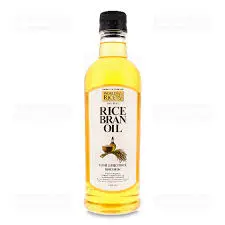
13. Rice Bran Oil
Rice bran oil is derived from the outer layer (bran) of rice grains and is commonly used in Asian cuisine. It has a high smoke point of around 450°F (232°C), which makes it ideal for high-heat cooking methods such as griddling and frying. The oil has a light, neutral flavor, which allows it to complement a wide range of dishes without overpowering them. Rice bran oil is rich in monounsaturated and polyunsaturated fats, as well as antioxidants like oryzanol, which may help in lowering cholesterol levels. Its mild taste and stability at high temperatures make it a popular choice for many cooking applications.
Key Highlights:
- Smoke Point: Around 450°F (232°C).
- Flavor: Light, neutral, and unobtrusive.
- Fat Composition: Rich in monounsaturated and polyunsaturated fats, including omega-6 fatty acids.
- Antioxidants: Contains oryzanol, which may help in reducing cholesterol levels.
- Stability: Resistant to oxidation, making it stable at high temperatures and ideal for frying.
Best Used For:
- High-heat griddling of meats like steak or burgers.
- Frying foods like tempura, chicken, and French fries.
- Sautéing vegetables for stir-fry dishes.
- Griddling seafood to retain the delicate flavors.
- Making deep-fried dishes such as egg rolls or donuts.
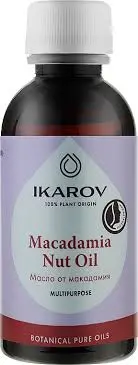
14. Macadamia Nut Oil
Macadamia nut oil is extracted from the nuts of the macadamia tree and is known for its mild, buttery flavor. It has a high smoke point of around 410°F (210°C), which makes it suitable for griddling and sautéing. This oil is rich in monounsaturated fats and antioxidants, which are beneficial for heart health. Due to its rich flavor, macadamia nut oil works well in both savory and sweet dishes.
Key Highlights:
- Smoke Point: Around 410°F (210°C).
- Flavor: Rich, buttery, and mildly nutty.
- Fat Composition: High in monounsaturated fats, which are heart-healthy.
- Nutrient Content: Contains antioxidants that may support overall health.
- Versatility: Works well for both savory and sweet dishes.
Best Used For:
- Griddling steaks or fish for a rich flavor.
- Sautéing vegetables for a smooth, buttery taste.
- Baking cookies and cakes to add a subtle nutty flavor.
- Making salad dressings with a rich texture.
- Griddling breakfast items like eggs and pancakes.
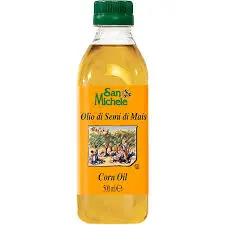
15. Corn Oil
Corn oil is extracted from the germ of corn kernels and is widely used for its mild flavor and high smoke point of around 450°F (232°C). It is rich in polyunsaturated fats, particularly omega-6 fatty acids. Corn oil is affordable and versatile, making it a popular choice for cooking, frying, and griddling. While it’s high in omega-6s, it can be part of a balanced diet when consumed in moderation.
Key Highlights:
- Smoke Point: Around 450°F (232°C).
- Flavor: Mild and neutral, allowing other ingredients to stand out.
- Fat Composition: High in polyunsaturated fats, especially omega-6 fatty acids.
- Stability: Resistant to oxidation, making it suitable for high-heat cooking.
- Affordability: An economical choice for cooking and frying.
Best Used For:
- Frying foods like French fries, chicken, and tempura.
- Griddling vegetables for a neutral flavor profile.
- Making salad dressings without overpowering other flavors.
- Baking to add moisture and texture.
- Cooking eggs and breakfast items.
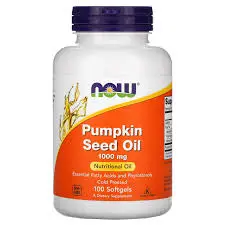
16. Pumpkin Seed Oil
Pumpkin seed oil is made from roasted pumpkin seeds and has a rich, earthy flavor. Although it has a lower smoke point of around 320°F (160°C), it is often used as a finishing oil rather than for high-heat cooking. This oil is high in antioxidants, vitamins, and omega-6 fatty acids, and is popular in salads, soups, and drizzled over dishes for a nutty finish.
Key Highlights:
- Smoke Point: Around 320°F (160°C).
- Flavor: Rich, nutty, and earthy.
- Fat Composition: High in polyunsaturated fats, especially omega-6 fatty acids.
- Nutrient Content: Contains antioxidants like vitamin E.
- Best Use: Often used as a finishing oil rather than for cooking at high heat.
Best Used For:
- Drizzling over salads for added flavor.
- Finishing soups and stews for a rich, nutty taste.
- Adding to grain dishes like quinoa or rice.
- Topping roasted vegetables to enhance the flavor.
- Incorporating into dressings for a unique flavor.

17. Walnut Oil
Walnut oil is made by pressing walnuts and has a rich, nutty flavor that enhances a variety of dishes. It has a relatively low smoke point of around 320°F (160°C), which means it is best used for low to medium-heat cooking or as a finishing oil. It’s high in omega-3 fatty acids and antioxidants, which promote heart health. This oil works particularly well in salads, sauces, and desserts.
Key Highlights:
- Smoke Point: Around 320°F (160°C).
- Flavor: Rich, nutty, and slightly sweet.
- Fat Composition: High in omega-3 fatty acids, beneficial for heart health.
- Nutrient Content: Contains antioxidants like vitamin E and polyphenols.
- Best Use: Ideal as a finishing oil rather than for high-heat cooking.
Best Used For:
- Making salad dressings with a rich, nutty flavor.
- Drizzling over roasted vegetables for added taste.
- Incorporating into baked goods like cakes and cookies.
- Topping warm grain dishes like quinoa or rice.
- Adding to pasta dishes for a unique flavor boost.
Conclusion
Choosing the right oil for griddle cooking can make all the difference in achieving the perfect sear, flavor, and texture in your dishes. Whether you prefer the mild taste of canola oil or the rich, buttery flavor of avocado oil, each option has its own benefits depending on your cooking style and needs. Oils with high smoke points, like avocado, rice bran, and sunflower oils, are great for high-heat cooking, while oils like walnut and pumpkin seed oil work best for adding flavor to finished dishes.
Ultimately, the best oil for griddle cooking is the one that matches your flavor preferences, cooking technique, and health goals. Experiment with different oils to see which one works best for your griddle and your favorite recipes. Happy cooking!
FAQ
1. What type of oil is best for griddle cooking?
The best oils for griddle cooking are those with high smoke points, such as avocado oil, canola oil, vegetable oil, grapeseed oil, and sunflower oil. These oils can handle high temperatures without breaking down, making them ideal for cooking on a griddle.
2. Why is smoke point important when choosing oil for a griddle?
Smoke point indicates the temperature at which oil begins to burn and produce smoke. Oils with higher smoke points are more stable at the high temperatures typically used on griddles, which helps prevent burnt flavors and the release of harmful compounds.
3. Can I use butter on a griddle instead of oil?
While butter adds flavor, it has a low smoke point and burns quickly on a hot griddle. For best results, use it in combination with high smoke point oil or add it toward the end of cooking.
4. What oil should I use for seasoning my griddle?
For seasoning, use oils with a high smoke point and neutral flavor, such as flaxseed oil, canola oil, or vegetable oil. These oils polymerize well, creating a durable non-stick surface.
5. How often should I oil my griddle?
You should apply a thin layer of oil before each cooking session to prevent sticking and maintain the griddle’s surface. Re-seasoning may also be needed occasionally, depending on usage.
6. Are there oils to avoid when cooking on a griddle?
Avoid oils with low smoke points like unrefined olive oil or butter for high-temperature griddle cooking, as they can burn quickly and affect the taste of your food.

Leave a Reply